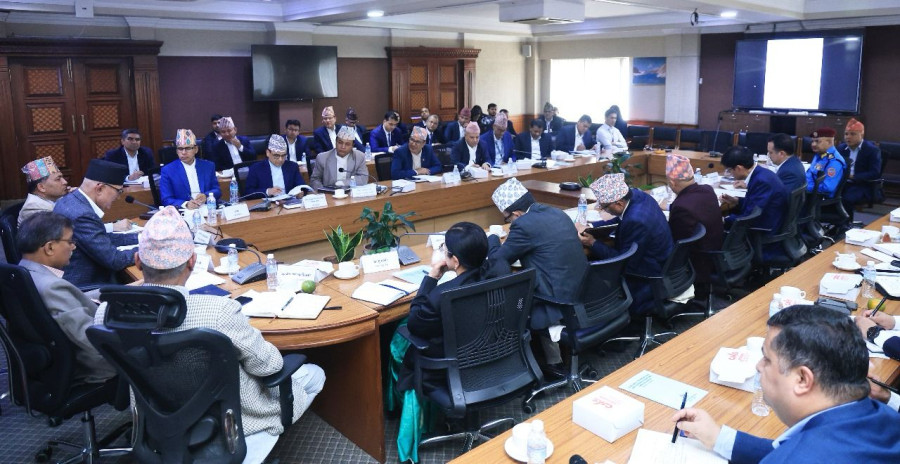National
Nepal starts groundwork to exit FATF grey list
The anti-money laundering committee has decided to implement action plan with clear responsibilities and timeframes
Post Report
Amid criticism that the government has not taken any concrete steps to remove Nepal from the Financial Action Task Force (FATF) grey list, on which the country has been placed for the second time, the government has now started groundwork to get the country off the list.
A meeting of FATF on February 17 to 21 in Paris had decided to place Nepal in the grey list after failing to meet several obligations.
During a meeting of the Anti Money Laundering Prevention Directorate Committee on Tuesday, a decision was made to finalize and implement the action plan to remove Nepal from the grey list, according to a statement issued by the Ministry of Finance. Earlier, Nepal was on the FATF grey list from 2008 to 2014. The country must clean up its financial sector within two years, or it will be placed into the black list and will face more international transaction hurdles and sanctions. The action plan will be implemented with clear responsibilities, activities, and timeframes, the statement said.
Deputy Prime Minister and Finance Minister Bishnu Prasad Paudel stated that while implementing the action plan to remove Nepal from the grey list, it is essential to develop a long-term strategy to ensure the country does not end up back on the list in the future.
The grey list, officially called “jurisdictions under increased monitoring,” includes countries with strategic deficiencies in their anti-money laundering (AML) and counter-terrorist financing (CFT) regimes, but are actively working with the FATF to address these issues.
Minister for Law, Justice, and Parliamentary Affairs, Ajay Kumar Chaurasiya, mentioned that there is no lack of laws to remove Nepal from the grey list. He expressed confidence that with strong willpower, Nepal could successfully be removed from the grey list. Attorney General Ramesh Badal emphasized that institutional governance is essential across all bodies. Countries placed on the list are given two years to exit by improving laws, their implementation, and taking action against illegal money and money laundering, among other measures.
Chief Secretary Ek Narayan Aryal pointed out the need for coordination among all relevant bodies. He mentioned that if the action plan is implemented with the support of technology, Nepal could successfully come off the grey list.
Nepal’s placement on the grey list stems from its failure to fully implement necessary legal, policy, and structural reforms to combat money laundering and terrorist financing, despite some legislative progress. The Asia/Pacific Group on Money Laundering (APG), which conducted Nepal’s mutual evaluation, highlighted weaknesses in enforcement, investigation, and prosecution of financial crimes, as well as inadequate regulation of high-risk sectors like cooperatives and real estate.
Nepal was given until October 2024 to meet FATF standards following an extension in July 2023. But the international body found the country had not sufficiently addressed these deficiencies by the deadline. Acting Governor of Nepal Rastra Bank, Neelam Dhungana Timsina, said it is necessary to start working according to the action plan from the beginning rather than waiting until the last minute.
Participants in the meeting stressed the need to focus on areas such as risk assessment, inter-agency coordination, regulation and supervision, investigation and prosecution, and criminal assets, according to the ministry’s statement. They also stressed that the focus should be on implementation, not just the legal aspects.
Nepal had previously been removed from the grey list in 2014 after amending the Anti-Money Laundering Act and improving its framework. However, the current listing reflects a lapse in effective implementation even with laws in place.




 9.12°C Kathmandu
9.12°C Kathmandu












%20(1).jpg&w=300&height=200)

